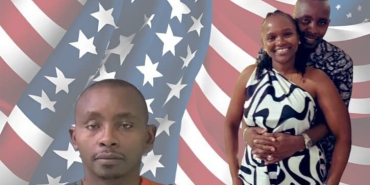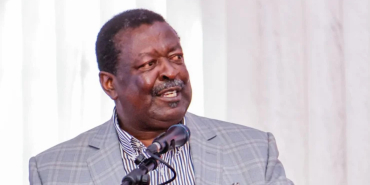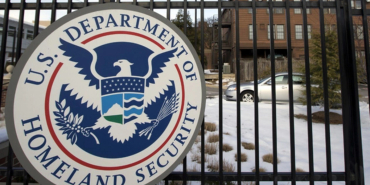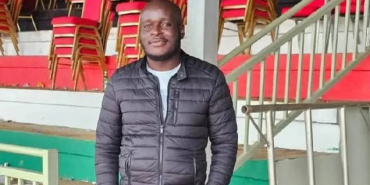Kenyan Scientists Lead Breakthrough in Sickle Cell Treatment

A novel drug, Scedamin, is poised to revolutionise the treatment of sickle cell disease in children, particularly in Africa, where the condition is most prevalent and access to care is severely limited.
Developed by Yunigen Inc., a US-based pharmaceutical company, Scedamin is a pediatric-friendly formulation of hydroxyurea designed to improve treatment accessibility and effectiveness. Sedamin's dissolvable tablet form is specifically formulated for infants as young as nine months.
This circumvents challenges associated with traditional hydroxyurea formulations, which require complex dosage adjustments for young children. Its stability without refrigeration and ease of administration make it particularly suitable for regions with underdeveloped healthcare infrastructures. Spearheaded by Kenyan scientists Dr. Wycliffe Omwancha and Charles Otieno, Yunigen Inc. is directly addressing critical treatment gaps for sickle cell disease, which disproportionately affects African populations.
An estimated 70% of the global sickle cell disease burden is concentrated in Africa, where comprehensive treatment options are scarce. Hydroxyurea, the active ingredient in Scedamin, has proven effective in managing sickle cell disease by reducing painful episodes, decreasing the need for blood transfusions, and mitigating infection risks, including protection against malaria. Scedamin's child-friendly formulation ensures accurate dosing and improved adherence to treatment protocols.
The development of Scedamin has garnered significant support, including recognition from high-ranking officials. Kenya’s Prime Cabinet Secretary, Musalia Mudavadi, recently visited Yunigen’s facility in Morgantown, West Virginia, to acknowledge the progress of Scedamin. He lauded the contributions of the Kenyan scientists leading the project. During the visit, Mudavadi emphasised the significance of Scedamin as a testament to Kenya’s growing scientific footprint on the international stage.
The visit was attended by US lawmakers, including West Virginia senators, and Kenya’s ambassador to the United States, David Kerich. The urgency for accessible and effective sickle cell treatment is underscored by sobering statistics. Approximately 240,000 children are born with the disease in Africa each year, but fewer than 2% receive adequate medical care.
Tragically, up to 80% of affected children die before the age of five. Scedamin’s development has received strong backing from both the Kenyan government and international stakeholders. Mudavadi reaffirmed Kenya’s commitment to advancing scientific collaborations that drive meaningful change.
As Scedamin progresses toward broader availability, it offers renewed hope for families affected by sickle cell disease across Africa and beyond. It represents a significant step forward in addressing healthcare disparities and exemplifies the power of global scientific collaboration and diaspora-led innovation.














Comments
Its really enciuraging to…
Permalink
Its really enciuraging to see such improvement and discovery in the medical field. I also have a dream of becoming a research doctor but financial constraints seem to derail my dream. I urge you to read my story below.
📢 Help Me Continue My Medical Education at University of Nairobi 🏥🎓
Hello everyone, my name is Evans Odhiambo Onyango, a first-year Kenyan medical student at the University of Nairobi. I did my K.C.S.E in 2023 from Kisii School and qualified to do Bachelor of Medicine and Surgery at UoN.
But today, I am facing a major challenge—I cannot afford my tuition fees, threatening my dream carrier.
Due to my placement in Band 5, under New Kenyan Funding Model for University Students, my first semester, my total fee was KES 118,450, and I have managed to raise KES 30,000 through small bursaries. However, I still have an outstanding balance of KES 88,450. This brings my total first year balance to the one written below. I might not be allowed to sit for my upcoming End of Year exams.
📌 Annual Household Fees: KES 236 900
📌 Current Annual Balance: KES 206 900
My parents are unable to support me financially since both of them are casual laborers whose earnings are far way below the amount I am required to pay.
I therefore humbly request well-wishers, organizations, or anyone willing to support me achieve my dream. Any contribution, big or small, will go a long way in keeping my dream alive. I'll really appreciate.
You can reach out to me via Mobile No: +254115282379 or my dad via +254723731339 for any inquiries, details, get fee statements or to verify any of these. Thank you.
Hello am Dennis Osiemo from…
Permalink
Hello am Dennis Osiemo from Oyugis Kenya my wife is suffering from sickle cell anaemia imagine every day before we go to bed she must take two capsules of hydroxyurea.Sometimes she complains of too much pain the whole body.I lost my job as salesman in one our local bakery I no longer support her in buying these drugs any assistance is highly appreciated.You can call me on +254725207636
Add new comment